2021 Ford Ranger Raptor, Sorry, Tremor Review

FAST FACTS
| Engine: | 2.3L I4 Turbo |
| Output: | 270 hp, 310 lb-ft |
| Transmission: | 10AT, 4WD |
| US fuel economy (MPG): | 19/19/19 |
| CAN fuel economy (L/100KM): | 12.1/12.3/12.2 |
| Starting Price (USD): | $42,150 (inc. dest.) |
| As-Tested Price (USD): | $46,525 (inc. dest.) |
| Starting Price (CAD): | $46,843 (inc. dest.) |
| As-Tested Price (CAD): | $53,398 (inc. dest.) |
North America has been waiting for the Ford Ranger Raptor with bated breath. But it will not happen for a while.
Unfortunately, the mid-sizer with Ford’s most sought-after truck badge is still some time away. Ford does offer the Ranger Raptor in Europe and the UK, complete with coil springs—and it’s not just a sticker job.
Get a Quote on a New Ford RangerThat foreign-market Raptor only comes with a twin-turbo 2.0-liter diesel, but it also gets aluminum front control arms and ditches the rear leaf springs in favor of a Watt’s linkage with coil-overs for better off-road performance. While we lament the lack of a Ranger Raptor in the North American lineup, Ford extends an olive branch in the form of the 2021 Ford Ranger Tremor. It might technically be “just a package,” but it adds enough off-roading equipment to seriously bump up the Ranger’s off-tarmac chops.
What’s new?
For starters, a more aggressive stance. The Tremor package adds a set 17-inch wheel shod with 265/70 all-terrain tires, along with a metal stepping beams on either side. It also adds red accents to the grille for a sportier appearance and gets Tremor stickers on either side on the tailgate. The front bumper is also now more aggressive and adds three degrees to the approach angle; the departure angle remains relatively unchanged. But changes are more than skin deep. The Tremor packs a set of Fox dampers at both ends and also comes with six auxiliary ports to power varying extra equipment from winches to lights or air compressors.
The Tremor not only fills the gap between any (hopefully) upcoming Ranger Raptor and the standard models but also competes with the likes of the Toyota Tacoma TRD Pro, Chevrolet Colorado ZR2, and the Jeep Gladiator Mojave. Also, it is only available with the 4×4 SuperCrew cab versions of the XLT and Lariat trims.
Cabin
Compared to the exterior the cabin is almost sedate. It’s almost identical to the regular Ranger save for the suede-lined seats, contrasting blue stitching on the steering wheel, and the six auxiliary switchboard on the dash. Otherwise, it’s pretty much the same cabin as the Ranger Lariat. The front seats are very comfortable with an enveloping seatback and adequate side bolstering. The suede on the seats feels good as well.
The rear seats are a bit upright, but the squab is comfortable, and it offers ample under-thigh support. Despite the almost upright seatback, the seatback holds you rather well. It also offers ample legroom even for taller passengers and the feeling of space is good all-round. While the Ranger could have done with a hydraulically assisted tailgate like the Tacoma, its towing capacity of 7,500 lb is significantly higher.
SEE ALSO: 2021 Jeep Gladiator EcoDiesel Review: No ApologiesThe faux leather upholstery feels soft but the generous use of hard plastic is a bit disappointing. The screen also doesn’t quite sit flush in its housing and the six auxiliary bridge was already starting to come apart. All in all, in 2021, the cabin tends to feel a tad dated. But in fairness, the competition, especially the Toyota Tacoma, doesn’t fare too well in modernity either.
Another gripe I have is with the SYNC3 system. Yes, it offers Apple CarPlay and Android Auto and does everything you ask of it, but it feels dated and slow. A newer SYNC4 is available even on the Ford Edge, which predates the Ranger in the American market. Even in its most extreme form, the Ranger’s cabin feels dated.
EcoBoost Power
Under the hood resides a 2.3-liter four-pot EcoBoost making 270 hp and 310 lb-ft of peak torque. While it might not sound like much on paper, the EcoBoost is actually a lively little motor. It pairs with a 10-speed automatic which primarily drives the rear wheels unless you switch modes from the terrain management system. It requires deliberate throttle inputs but once you hit the mid-range, the torque output rises considerably, resulting in quicker acceleration. The Ranger makes its peak torque at 3,000 rpm which is ideal in most scenarios. I should point out that the deliberate throttle inputs are only required in the normal mode.
Push the Ranger into sport mode and it feels like it ate its protein powder straight from the box. The throttle mapping changes dramatically, what was already adequate acceleration becomes outright urgent. If you really give it the beans, the Ranger darts forward with renewed purpose to the point of being quite unnerving. Speaking of, the brakes, though adequate and quite effective, lack feel. They also feel spongy so you invariably end up braking a tad harder than you plan to because you don’t want to be on the other side of that equation. Plus, the Continental Grabber all-terrain tires don’t perform as well as dedicated on-road rubber so you do need to judge your braking distance accordingly.
Road (and off-road) Manners
The suspension features a Fox damping setup on all four wheels with a piggyback setup at the rear and it makes a tremendous difference in how the truck handles. Especially in the city. Bump absorption at most speeds is as good as it can be on a mid-size truck. The Tremor has the best mid-size truck suspension setup I’ve experienced so far. While there is a bit of lateral movement due to the ladder frame setup, even the bigger bumps taken at an angle don’t make pinballs of occupants thanks to a softer setup. It does, however, sit 9.7 inches (246 mm) off the ground, which translates into body roll in the corners. Having said that, out on back roads, the Ranger Tremor handled itself quite well in the bends. It never felt out of shape. The steering, though lacking in feel, has little to no play so getting the hang of it is pretty easy. You can weave in and out of corners based on vision and speed-feel alone. Don’t try to hit apexes; rather go along the rails and the Tremor feels rather enjoyable even on tarmac.
SEE ALSO: Ford Ranger vs Toyota Tacoma: Which Mid-size Pickup is Right For You?Unfortunately, I wasn’t able to test the Tremor’s off-road prowess to its fullest. But I did take it on a gravel track and on the rough surface it felt more at home than it does on the tarmac. There is a considerable difference between the throttle and transmission setups in Grass/Gravel/Snow, Mud/Ruts, Sand, and of course Normal modes. For our gravel track, I chose the gravel mode at first which makes the throttle more deliberate and holds on to gears for longer. It also means it doesn’t allow for as much wheelspin. But if you want to have fun on a flat gravel track, 4H with sport mode works the best.
Belting around the gravel path, the Tremor really came together; the faster you go, the more confident it feels. The bump absorption and overall stability is phenomenal. And the feeling when you catch a drift mid-corner as the rear comes around and you steer with the throttle is nothing short of addictive. Turning the traction control off results in more freedom but the TC is never fully off. Novices and beginners (yours truly included) will appreciate that as it leaves some room for error. Armed with a locking rear differential and off-road cruise control of sorts, the Ranger Tremor is quite well-equipped to handle what most off-roading enthusiasts will put it through.
Verdict: 2021 Ford Ranger Tremor Review
Lacking a front locking differential, the Ranger Tremor isn’t as well-equipped for serious off-roading as the Jeep Gladiator or the Chevrolet Colorado ZR2. But maybe that’s the point. The Tremor package doesn’t turn the Ranger into a serious off-roader. It adds just enough off-road-ness to the Ranger without it feeling too intimidating and still keeping things fun. A strong mid-range coupled with an impeccable Fox damping setup is all a beginner needs to have fun off the road. Ford also offers the Tremor Package with the XLT trim to make it more accessible.
But there is, admittedly, a caveat. Though the package itself costs $4,290, it requires additional equipment that adds $5,960 ($6,190 CAD) to the price if you choose the XLT trim and $6,295 ($8,365 CAD) if you choose the Lariat. That puts the starting price at $42,150 ($46,843 CAD) which undercuts the competition by quite a margin and provides a good starting point for beginners. The Lariat we have here tips the price scales at $46,525 ($53,398 CAD). While more expensive than its competition, it also offers more standard equipment. The Tremor package doesn’t turn the Ranger into a Raptor. But until the Ranger Raptor joins the ranks, the Tremor is plenty fun to be worth it all on its own.
Become an AutoGuide insider. Get the latest from the automotive world first by subscribing to our newsletter here.
LOVE IT
- Strong mid-range
- Fun off the road
- Good blend of on and off-road handling
LEAVE IT
- Dated interior
- No SYNC4
- No front locking differential

More by Kshitij Sharma



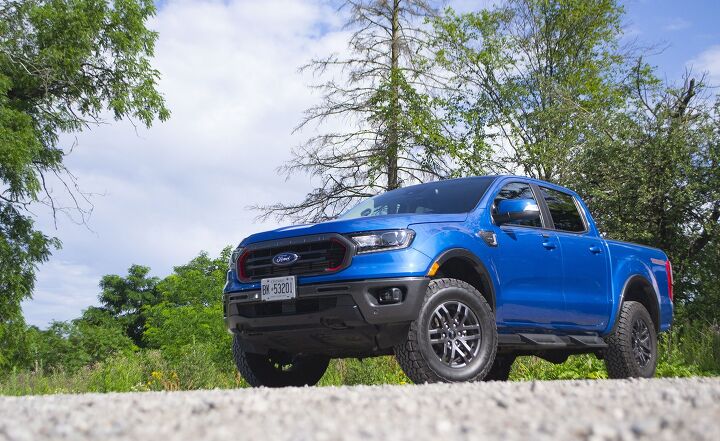

























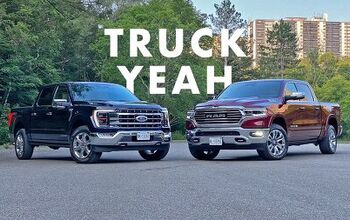

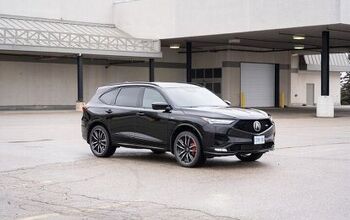
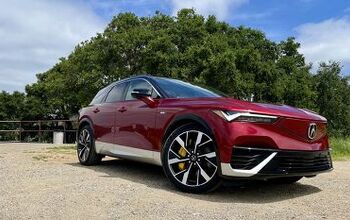





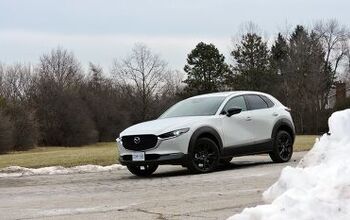
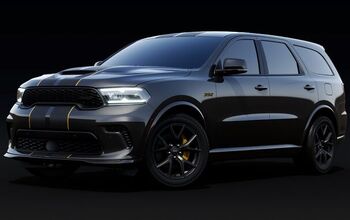

Comments
Join the conversation